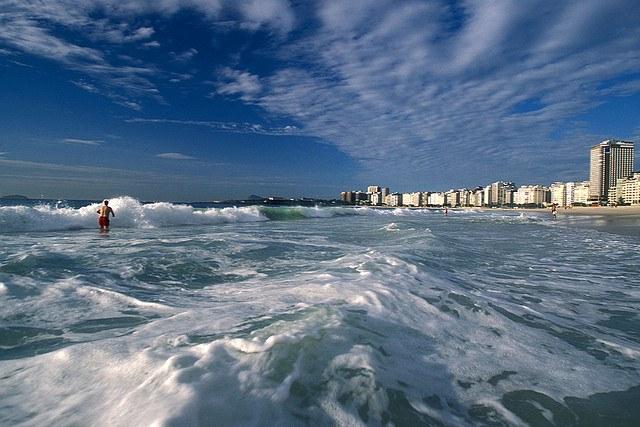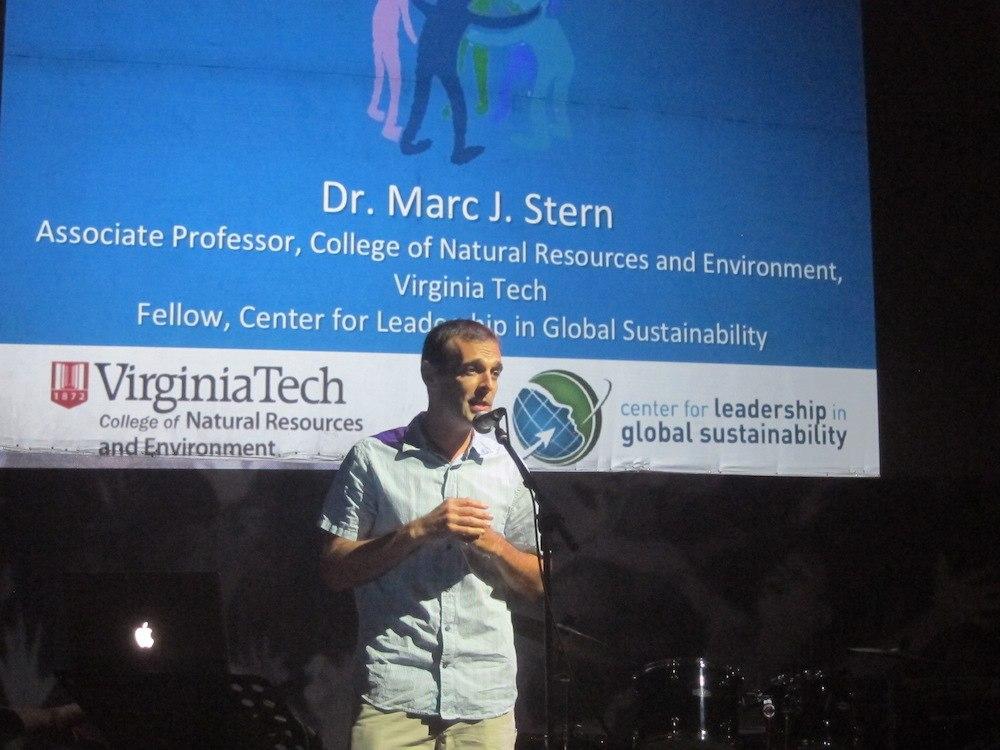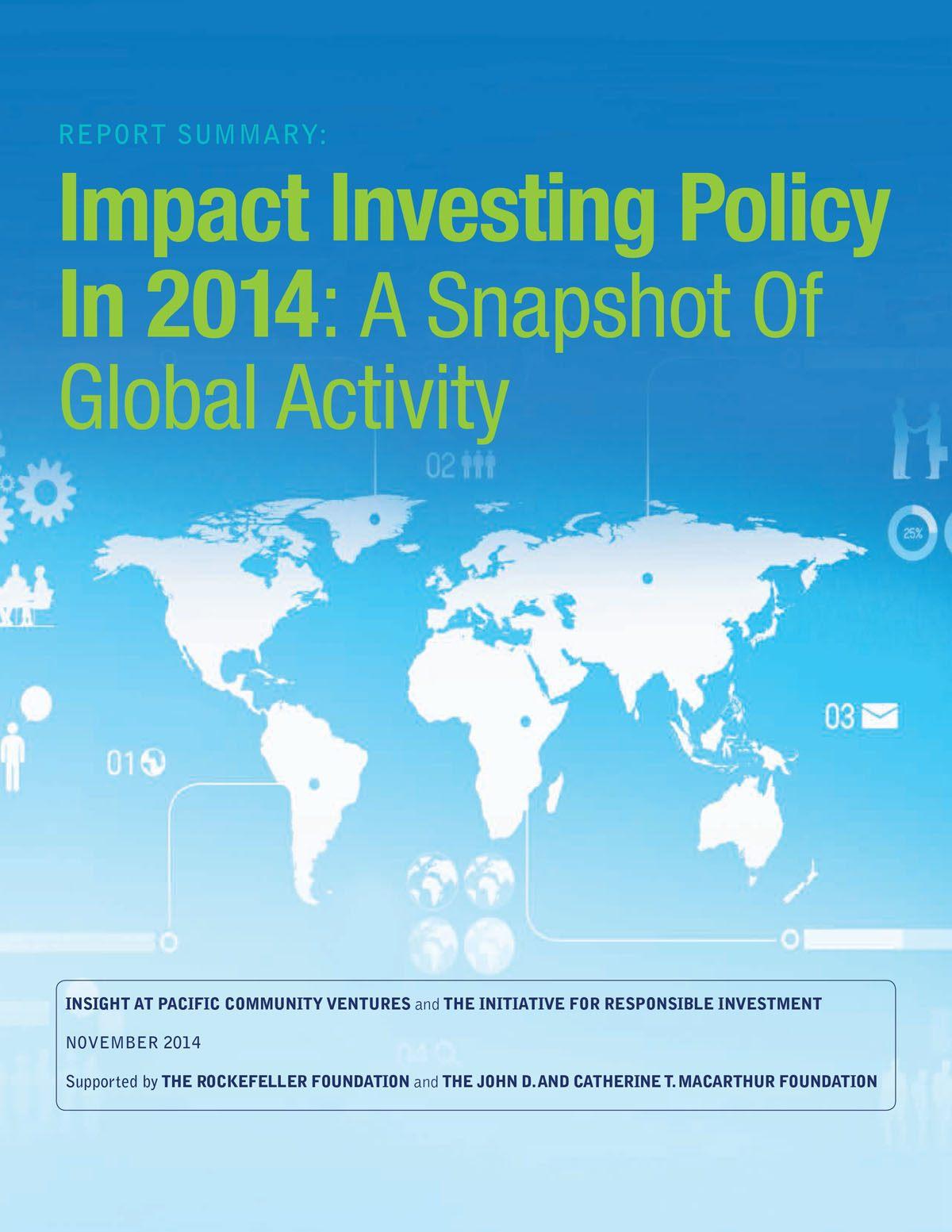Are Nonprofit Hospitals That Sue Poor Patients Breaking the Law?


Medical debts are the single greatest reason that families declare bankruptcy in the United States. In a 2013 a survey, Nerdwallet found that 56 million Americans under 65 have problems paying their medical bills, and more than half of those (35 million) will have their bills referred to collection agencies, the first step to a potential lawsuit from creditors looking to collect on those debts.
The Affordable Care Act (ACA) was supposed to help with that problem when it went into effect in 2014. In addition to ensuring that more people would be covered by cost-reducing insurance plans, it also reinforced older guidelines that required hospitals to have a financial assistance policy in place for low-income patients. These guidelines particularly apply to not-for-profit hospitals (the bulk of the hospitals in the U.S.), which receive hefty tax breaks for their status. Under draft rules established by the Internal Revenue Service, nonprofits are now required to allow more leeway for individuals to apply for financial aid before sending accounts to collection agencies.
Last year, an investigation by National Public Radio and ProPublica found that some nonprofit hospitals were skipping this expected protocol and sending patients to collection agencies, which would then sue them and garnish their wages to recoup the hospital charges. The investigation concentrated on patients who had received medical services prior to 2014 (the start of the ACA), but found that the procedure still appeared to be in place in some nonprofit hospitals when the new Act was put in place.
What's more, some patients who were sued said that they had either never been informed that they could apply for financial aid, or had not been aware that they had qualified for it. Those patients who were sued and received wage garnishment also were required to pay a significant fee to the collection agency, which in turn made it even harder for patients to cover their living expenses and avoid bankruptcy.
Not surprisingly, NPR and ProPublica's story has garnered a fair amount of attention since it aired in December. Medical bankruptcies aren't a new phenomena in the U.S., but there's something about a nonprofit hospital suing and garnishing the wages of its poorest patients that often seems antithetical to its image. It certainly did for one Republican senator from Iowa.
According to Sen. Chuck Grassley, who serves as chair of the Senate Judiciary Committee, nonprofit hospitals that sue patients may be breaking the law.
On Friday, Grassley sent a letter to the St. Joseph, Missouri, hospital that had been highlighted in NPR's broadcast and requested to know why it was suing low-income patients, criticizing Mosaic Life Care's actions as "extremely punitive and unfair to both low-income patients and taxpayers who subsidize charitable hospitals’ tax breaks."
This isn't the first time that Grassley has gone knocking on hospital boardroom doors asking questions. In June 2013, he expressed concern about a report that Kaiser Health News and ABC News published suggesting that some nonprofit hospital CEOs are benefiting from huge bonuses and other benefits in reward for raising profit margins. In April 2014, he pushed for more accountability measures for nonprofit hospitals.
In 2016, the IRS's draft rules will go into effect -- and will tighten the parameters by which a nonprofit can do business. Among other things, the hospital's financial assistance policy must be on its website in plain, straightforward language (a concern that was highlighted in NPR and ProPublica's story). They must take other steps as well to ensure that patients are fully informed they may benefit from financial aid. If the hospital does not exhaust these steps, it can risk losing its nonprofit status.
The changes will likely be welcomed by many patients who, with or without ACA coverage, still struggle to meet spiraling health care costs.
Image credit: Chris Yarzab
Electrified Truck Power-Train Can Cut Fuel Use in Half


When it comes to electric vehicles, we hear plenty about electric cars being launched into the consumer market but not too much about commercial vehicles. Maybe that's because not too many people have to concern themselves with what type of delivery or garbage truck they are going to buy next. Nevertheless, such considerations matter, since the electrification of commercial fleets promises considerably larger efficiency gains than cars.
Four-year-old California company Wrightspeed, started by Tesla co-founder Ian Wright, has developed a technology that zeros in on a specific niche of the commercial fleet market, bringing both fuel savings and emissions mitigation for commercial fleet operators.
Coming from his background at Tesla, Wright remains convinced of the benefits of going electric, but he recognizes that EVs can be perceived as expensive in some markets. In starting Wrightspeed, he says the mission was to figure out, "How do you get more bang for your buck?" And the answer was to just focus on building power-trains for trucks.
Staying true to vehicle electrification, Wrightspeed's power train combines powerful electric motors and batteries, but in order to cover the distances commercial trucks run, the power-train incorporates a gas-turbine range extender; the whole package is then retrofitted into vehicles from truck OEMs. While the company sources the gas-turbine extender and batteries from outside, the electric motors, inverters, transmission and control electronics are all of the company's own design.
The nearest automobile equivalent using range extending technology is the Chevrolet Volt, and Wrightspeed's solution shares a similar concept whereby the range-extending motor (although of an entirely different design) acts as an electricity generator for the vehicle batteries, rather than driving the wheels directly.
Of course, since Wrightspeed's power-trains are going into trucks, the whole thing is on a much beefier scale. Wright told me, "Our motors have four times the power-to-weight ratio than anything else available." Additionally, like most EVs, their technology uses regenerative braking -- which puts energy back into the batteries every time the brakes are applied.
Consequently, Wrightspeed's technology lends itself particularly well to commercial vehicle applications where frequent start-stop cycles occur -- a feature common with a typical package delivery or garbage truck. "A thousand horsepower easily goes into the brakes of a commercial truck," when such vehicles are brought to a stop, says Wright. In a conventional truck, that energy is wasted, but when you consider 1,000 horsepower is the equivalent of about fives times the peak horsepower of most family cars, that's worth capturing.
The energy captured by regenerative braking is fed back into the lithium-iron phosphate batteries Wrightspeed uses -- a battery chemistry particularly suitable for developing the high power necessary for their electric-drive motors. When the batteries are depleted, the range extender kicks in which is calibrated to run constantly at the most efficient speed to generate the most power. A benefit of using a gas-turbine range extender is that it runs very quietly -- considerably quieter than a diesel engine, Wright said, which is a worthy attribute when trundling through residential areas.
So, what does all this add up to in terms of efficiency? Wright told me the average garbage truck travels about 130 miles a day with around 1,000 hard stops, gulping down around 14,000 gallons of diesel a year in the process. Wrightspeed's power-trains use less than half that amount of fuel, with the added benefit of very significant emissions reductions.
This last point is very important. California's strict standards on vehicle emissions means that a truck purchased as recently as 2006 is likely no longer compliant with emissions regulations today. By comparison, Wright says their range extending power-trains achieve a 3.5 times improvement over what California currently demands.
This allows the company to potentially tap into a lucrative market of retrofitting older existing vehicles. Wright explained to me that retrofitting commercial vehicles for emissions compliance is a $5 billion industry. And while their power-trains are expensive up front, retrofitting that 2006 truck, say, works out to be about half as expensive as upgrading to a brand new one. On top of that are the ongoing fuel savings: Wright says their technology is cost-effective for vehicles using 4,000 gallons or more of fuel per year.
Wrightspeed's first customer was Fed-Ex, which began purchasing power-trains for some of its vehicles about a year ago. Additionally, the company is working with a north Bay Area garbage collection company, which approached Wrightspeed after recognizing its power-trains would be an optimal fit for the company's fleet.
Last week, the company announced it will relocate from San Jose after having signed a lease with the city of Alameda, California to move into the 110,000-square-foot historical Hanger 41, at the former Alameda Naval Air Station. According to the press release, the move, "will facilitate Wrightspeed's creation of 280 new Bay Area jobs by 2018. Wrightspeed joins a growing list of green-tech, clean energy, and advanced manufacturing companies choosing to call Alameda home."
Picture used with permission of Wrightspeed
Follow Me on Twitter: @PhilCovBlog
The Business Plan to Preserve Sonoma County Winemaking


The Sonoma County Winegrape Commission (SCWC) is determined to protect and preserve the region’s wine industry. The SCWC, founded in 2006, recently announced its 100-year business plan to preserve agriculture in Sonoma County, California, namely growing wine grapes.
The wine industry is important for Sonoma County. In 2012, the wine industry contributed $1.4 billion to the local economy and accounted for 1 in 3 jobs. Over 1,800 growers are a part of the SCWC.
The area is no stranger to sustainability: Last year, it announced plans to be the nation’s first sustainable wine growing region by 2019. The region has reached one-third of its target in just one year. The winegrape growers are following a sustainability program as well, which focuses on 138 farming and business practices, including land use, energy efficiency, water quality assessments and carbon emissions.
Over 43 percent of the county’s vineyard acres have completed a sustainability assessment, and 33 percent are certified under a third-party auditor program. Over 950 winegrape growers have attended sustainability-related events.
“Last year when we announced our intent to be 100-percent sustainable by 2019, it was always viewed as the starting point, not the end goal,” said Karissa Kruse, president of the Sonoma County Winegrowers, in a statement. “It is our job as farmers to be caretakers of the land in Sonoma County and preserve our agricultural legacy and way of life for future generations. Just as we inherited the land from previous generations, we have a fundamental responsibility to make the land better for those who inherit it from us."
Profiles in sustainability
The SCWC released its first sustainability report this month. The profiles of Sonoma County wineries and vineyard owners are some of the most interesting parts of the report. Balletto Vineyards and Winery is one of the vineyards profiled. Balletto owns 14 estate vineyards totaling 600 acres in three regions in the Russian River Valley. Balletto has been certified for five years under Lodi Rules, which certifies a farmer’s use of 101 sustainable farming practices in six categories. The vineyard has implemented a number of sustainable practices, including irrigation systems that are monitored monthly in order to maintain consistent pressure and stop leaks. A pipeline carrying recycled water from Santa Rosa helps Balletto to minimize the use of its wells. That is very important in a state suffering from its fourth year of one of the worst droughts in its recent history.
Jackson Family Wines (JFW) has wineries in six coastal California counties. All of JFW’s vineyard acres and wineries are certified sustainable by the California Code of Sustainable Winegrowing and the Sustainability in Practice (SIP) programs. JFW has implemented a number of sustainability measures. Some of those measures include retrofitting lighting systems and installing more efficient HVAC, conveyors, pumps, air compressors, cooling and refrigeration systems. In 2013, JFW started to invest in rooftop solar photovoltaic (PV) systems, and by the end of 2016 it plans to install seven megawatts across nine of its wineries. That will be enough to to supply over 50 percent of JFW’s electricity needs, equivalent to the energy needed to power 1,400 homes.
Some consumers are willing to pay more for sustainably produced wine
Several polls show that some consumers want to buy wine that is sustainably produced. A recent national survey conducted by Wine Opinions and commissioned by SCWC and Sonoma County Vinters found that 33 percent were more likely to buy Sonoma County wine, and 36 said supporting sustainable agriculture is important. Another poll by Nielsen Global Survey of Corporate Social Responsibility found that 55 percent of those polled will pay more for products and services from companies committed to positive social and environmental impact. That’s an increase from 50 percent in 2012 and 45 percent in 2011.
Image credit: Mike Boening Photography
3p Weekend: 10 Cities On the Cutting Edge


With a busy week behind you and the weekend within reach, there’s no shame in taking things a bit easy on Friday afternoon. With this in mind, every Friday TriplePundit will give you a fun, easy read on a topic you care about. So, take a break from those endless email threads, and spend five minutes catching up on the latest trends in sustainability and business.
While we've been busy predicting trends for 2015, major cities around the world are already making it happen. This week we tip our hats to 10 cities hard at work building the urban centers of tomorrow. The future is now.
1. Milan
Milan is host to the 2015 World Expo, running from May 1 through Oct. 31 in the north Italian city. Planned highlights include the Future Food District, a space to learn about how technology is affecting the global food chain, the New York Times reported earlier this month, when it named Milan the No. 1 place to visit in 2015.
If that's not enough, the city is also testing out a new way to cure smog and urban gridlock: Every commuter who leaves their car at home will receive a free public transport voucher, Fast Company reports. An Internet-connected box on participants' dashboards keeps track of the car's location to make sure no one cheats. We've been exploring the benefit of free public transit programs for some time, so we'll definitely have our eyes on this one.
2. Madrid
Speaking of ditching cars for your daily commute, Spain's capital is taking things a step further: It plans to ban cars in its city center starting this year, TheCityFix Brasil reports. (Check out an English translation of the story here on SmartCitiesCollective.)
The measure is part of the city’s sustainable mobility plan, which is projected to reduce the share of daily trips by private vehicles from 29 percent to 23 percent by 2020, according to the report.
3. Philadelphia
I may be slightly biased here, as I've spent most of my life in the Philadelphia area. But consider this: The New York Times named Philly the No. 3 place to visit in 2015, and mostly because of a laundry list of sustainability upgrades.
The city has been slowly transforming once-dilapidated sections into hubs of outdoor urban activity. After revitalizing the Race Street Pier in 2011, giving residents open access to the Delaware River waterfront, the city doubled-down last year with the addition of the Spruce Street Harbor Park (complete with a bi-level public walking path, as well as hammocks, lanterns and a floating bar).
Philly also used its City Hall renovation project as a chance to add more green space. Nearby Dilworth Park -- which was once little more than an eyesore, as I can personally attest -- has a brand new look, with pedestrian-friendly spaces and an outdoor skating rink. The city is also set to (finally) add a bike-share program this year.
4. Medellín, Colombia
Colombia's second-largest city earned the No. 11 spot on the New York Times' 52 Places to Go in 2015 list for its attention-grabbing urban renewal efforts.
"Many of the once legendary slums have been transformed through some astonishing architectural gems, like the Biblioteca España, a hyper-modern public library and community space in the low-income Santo Domingo neighborhood," the Times reported. The city has also added new art exhibitions and green space, and the paper called its Metrocables (aerial gondolas) and 1,300 feet of outdoor escalators, which connect poorer hillside neighborhoods with the city center, "global milestones in smart public transit."
5. Paris
Paris made headlines last year when it briefly banned cars with even-numbered plates due to elevated pollution levels. The temporary ban reduced pollution by around 30 percent. Now, Paris is considering permanently discouraging cars to improve air quality and overall livability in the city, reports Fast Company.
Car use is already restricted in the city center on weekends, and this rule may soon span out into the week. By 2020, the mayor plans to double the number of bike lanes in the city, ban diesel cars, and limit certain high-traffic streets to electric cars and other ultra-low-emission vehicles, Fast Company reports. Vehicle ownership has been steadily declining in the City of Lights, where only 40 percent of residents own a car.
6. Helsinki
Like most cities around the world, Helsinki expects a population surge in coming years -- but that doesn't mean carbon emissions will increase. After the United Nations climate talks in Lima last year, local government went on record saying that it may be up to big cities to curb emissions.
With a new mobility plan, the city will "transform car-dependent suburbs into dense, walkable communities linked to the city center by fast-moving public transit," reports Fast Company. The city is also testing a new app that lets residents find nearby public transit or instantly call up a shared bike, car or taxi.
The city also depends on renewable energy for much of its public transit: "Up to 49 percent of public transportation trips in Helsinki are completely CO2-free. The city's goal is that 30 percent of buses will use green energy by 2025," Irma Karjalainen, a director of Helsinki's environmental services authority, told Chinese news agency Xinhuanet.
7. Chicago
Chicago is known for its frigid winters, but hearty residents don't let that keep them down. More than 2.6 million trips have been taken via the city's bike-share program, Divvy, which began in mid-2013. While the company that originally operated the program was sold in October, the new owner, Bikeshare Holdings, said the transition won't affect Divvy's operations. The program plans to add 175 stations and 1,750 bikes next spring, reports the Chicago Tribune.
Additionally, this year the city will see some of its forgotten corners turned into public green space. After breaking ground last fall, the city aims to enhance the downtown area of the North Harbor District by adding a flower garden, ornamental lighting, seating, green space and a stage area, local news agencies report. The new lakefront space will also be home to public art installations, and it is expected to be completed by May, with additional green space planned for this year.
8. Bangkok
Bangkok is famous for its skyscrapers, but the city has been busy quietly adding green space over the past few years to encourage pedestrianism and outdoor enjoyment. The city has added 953 acres of green space since 2013, with a plan to add around 570 acres more by 2016.
The city now provides 5.46 square meters (or about 59 square feet) of green space per person -- well below major American cities like New York and Chicago, but a vast improvement over recent years. The city hopes to bring that figure up to 62 square feet in 2015.
9. Hamburg, Germany
Just last week, Germany's second largest city unveiled a plan that is seriously cool: It's using green space to solve noise problems in residential areas stemming from the Autobahn thoroughfare.
Three public parks will cover the Autobahn highway that passes through Hamburg's city center, buffering noise, reducing air pollution and unifying the downtown, reports the Romanian science and tech publication ZMEScience.
10. Rio de Janeiro
Rio de Janeiro was one of three Brazilian cities to be awarded the 2015 Sustainable Transportation Award (along with Belo Horizonte and São Paulo), the CityFix reported last week. Organized by the Institute for Transportation and Development Policy, the award recognizes cities for their achievements improving urban mobility.
Rio beat out finalists such as Helsinki, Milan and Cape Town, South Africa, to win the prize, thanks to its rapid deployment of public transport options. The city's bus network now has nearly 60 miles of dedicated routes. Once completed, the network will also feature the TransOlímpica and TransBrasil train, which will carry about one million people.
The city aims to provide more than 60 percent of the population with access to a complete network of public transport, from bus to rail systems (not to mention 280 miles of bike paths), by the time the Olympic Games kick off next year, the CityFix reported.
Primary image: William Warby; Milan: Bert Kaufmann; Madrid: Miguel Diaz; Philadelphia: Norman Maddeaux; Medellín, Colombia: Jorge Láscar; Paris: Tommie Hansen; Chicago: Alan Stark; Helsinki: Miguel Virkkunen Carvalho; Bangkok: Jon Collier; Hamburg, Germany: Flickr user trombone65; Rio de Janeiro: Laszlo Ilyes
Mary Mazzoni is the Senior Editor of TriplePundit. You can follow her on Twitter @mary_mazzoni.
Volkswagen, BMW Join Forces to Create EV-Charging Corridor


At the 2015 Washington Auto Show, two top automakers announced an initiative to create express-charging corridors on the East and West coasts.
Together with ChargePoint, the world's largest electric vehicle charging network, the American divisions of Volkswagen and BMW hope that increased access to fast-charging stations will speed U.S. adoption of electric vehicles, the companies said in a press conference on Thursday.
If this sounds familiar, that's probably because it is. The ever-elusive "electric highway" has been in the making for years, and many companies have tried and failed to make it happen. But this latest endeavor, which will add to the growing ChargePoint network of more than 20,000 locations in North America, just may bring Americans closer to the dream of an electrified road trip.
Installations have already begun on the West Coast, with the first location in San Diego County. The companies plan to move at a rapid clip, completing 100 fast-charging stations on both coasts by the end of this year.
“The build-out schedule is literally as fast as humanly possible,” Robert Healey, head of EV Infrastructure at BMW of North America, told Forbes on Thursday. “We’re fully funded and fully staffed. The only limiting factor is normal construction time.”
Volkswagen and BMW team up for better charging
In the initial phase of the Volkswagen-BMW partnership, the aim is to install nearly 100 direct current (DC) fast-charging ports across both coasts. The so-called "express-charging corridors" will begin with the most heavily-populated and highly-trafficked regions on Interstate 95 on the East Coast, from Boston to Washington, D.C. Out west, the planned corridors will connect the Portland, San Francisco, Los Angeles and San Diego metro areas, the companies said.
Installations are planned both within and between relevant metros, strategically-spaced at a maximum of 50 miles apart -- well within 80- to 100-mile range of the automakers' top-selling EVs, the Volkswagen e-Golf and BMW i3.
Each charging location is expected to include up to two 50-kilowatt DC fast-chargers, or 24-kilowatt DC Combo fast-chargers with the SAE Combo connector, the companies said. When charging at a 50 kW station, both the i3 and the e-Golf can charge up to 80 percent in 20 minutes (30 minutes for a 24 kW station).
Fast-charging gives drivers just enough time to grab a bite to eat, use the restroom and be on their merry way. It's a familiar model that companies seeking to establish an "electric highway" have used before with mixed results -- and one that ChargePoint already utilizes successfully in its growing network. The charging stations are planned for pitstop locations that already exist along major roadways, such as restaurants, shopping centers and rest areas, making it all the more convenient for drivers to charge up.
"With strategically-placed stations where drivers need them, these express-charging corridors will give EV drivers the freedom to go farther and have an EV as their only car without limitation,” ChargePoint CEO Pasquale Romano said in a statement.
The fast-charging ports can be used to charge both BMW and Volkswagen electric vehicles, as well as other EVs that incorporate DC Fast Charging/SAE Combo capability, such as the Chevy Spark EV. Upcoming models from Audi, Chrysler, Ford, Mercedes and Porsche are also expected to use the SAE Combo DC fast-charging standard, reports TorqueNews.
The planned charging locations will also include Level 2 chargers, the companies said, giving all EV drivers a chance to charge up (albeit a bit more slowly). Level 2 chargers can dispense up to 25 miles of range per hour of charging in any EV, providing a full charge for the BMW i3 and the VW e-Golf within 3.5 to 4 hours.
The new automaker: From "building cars" to "e-mobility"
Only a few short years ago, most companies released EVs with the good ol' fashioned "if you build it, they will come" philosophy. But recently we've seen major automakers come to realize that taking an active role in establishing an e-mobility network -- one that makes it feasible for average drivers to own an EV and use it daily -- is good for business.
“Volkswagen believes in a holistic approach to e-mobility in order to create a seamless experience for the consumer,” said Jörg Sommer, vice president of product marketing and strategy for Volkswagen of America, in a statement. “The investment in the express charging corridor will provide e-Golf and other electric vehicle owners with the added support to travel their day-to-day and popular long distance routes.”
Robert Healey of BMW said the corridors are "another important step in the development of the U.S. e-mobility infrastructure," adding that a more expansive charging network will make "the BMW i3 and other electric vehicles even more appealing."
Tesla became the first automaker to enter the charging business when it broke ground on its Supercharger network in 2012, installing six charging stations in California. The network now boasts more than 150 charging stations across 38 U.S. states, as well as locations in Canada, Europe and the Asia-Pacific region, well surpassing the company's initial goal to have 100 operational by 2015.
With a first-phase rollout of 100 charging stations, this three-way partnership could very well give Tesla a run for its money -- with one notable difference: Any EV driver can use the stations, while the Supercharger network serves Tesla drivers only. And this distinction will only become more important as more EVs using the same fast-charging standard hit the market.
Image courtesy of Volkswagen
EU Considers Allergy Warning Labels for Herbal Products


Allergy sensitivities have been on the rise for some time, particularly in the cities of developed countries like the United States, Canada and the United Kingdom, where as many as 1 in 5 individuals have been diagnosed with allergies to pollen, dust or types of food. In most cases, these allergies are more a bother than a life-threatening health risk, but the spike has attracted attention in the European Union. Physicians are seeing an increase in exposure to substances we normally think of as pollen-generators: herbal plant-based substances.
One of the culprits is a naturally-occurring terpene, called linalool, that is found in many herbs and spices. (Yes, it's also found in marijuana and is a popular component of some cannabis strains.) It's become a magic ingredient for many personal care manufacturers, who often use it to produce a desired, pleasant fragrance.
According to Environmental Working Group, more than 4,000 products use linalool for fragrance and other purposes. The EWG points out that while toxicity isn't known to cause cancer, there is a concern that consumers are being bombarded with a substance that scientists have been able to show can result in allergic reactions with repeated use.
Two of the more common vehicles for linalool are lavender and chamomile, both of which are used extensively in our personal care products. Soaps, lotions and perfumes, as well as food and aromatherapy products, all boast these two fragrances or tastes, often courtesy of the linalool extract they are made with. For those who are susceptible to allergy sensitivities, the exposure of linalool to air can be a toxic experience that can manifest in rashes, asthma or other adverse symptoms.
The rise in allergy symptoms have researchers concerned because oftentimes more than one factor contributes to its incidence. Individuals who have autoimmune disorders like rheumatoid arthritis, lupus and Celiac disease are often found to be more predisposed to allergies as well.
Some researchers tie this to what is called "the hygiene hypothesis," which states that "excessive cleanliness interrupts the normal development of the immune system, and this change leads to an increase in allergies."
If that sounds weird, think of it as the difference between born-and-raised in the country with fields of wild plants, pollen and the rich fragrances of rural surroundings, and living in the city, where apartment or condo life is often devoid of such constant exposure.
"In short," say UCLA researchers, "our 'developed' lifestyles have eliminated the natural variation in the types and quantity of germs," or healthy rural microbes that our bodies were programmed to respond to. This absence, researchers have found, not only can increase an individual's chances of developing allergies to substances, but also puts the person at risk for worsening allergy symptoms the more they are subjected to the substance.
Add to this the fact that climate change, through increasing warming of the atmosphere, helps create and disperse pollens more rapidly, and it is easy to see why researchers are concerned about the possible increase in allergic reactions to linalool substances.
The EU hasn't confirmed whether it will add warning labels to products or when it would start doing so. But it is clearly listening to findings and advice by organizations such as the Swedish Chemicals Agency, which has recommended a health warning concerning exposure to lavender products. We'll see whether governments on this side of the pond follow suit.
Image of personal care products store: James Petts
Image of commercial lavender field: Sara Fraser
Image of camomile field: Joita Gigi
Trust Theory in Natural Resource Management


By Iris Picat
Trust is key to any relationship. That is a well-known truth excessively written about in popular literature. The distinction with a recent article titled "The Multidimensionality of Trust: Applications in Collaborative Natural Resource Management," co-authored by Marc Stern, associate professor at Virginia Tech and fellow at the Center for Leadership in Global Sustainability (CLiGS), is the way it approaches trust. It decomposes its elements and describes four of the forms it takes under the natural resource management umbrella: dispositional trust, rational trust, affinitive trust and procedural trust.
A blanket definition for trust used by the authors:
“a psychological state in which one actor (the trustor) accepts some form of vulnerability based upon positive expectations of the intentions or behavior of another (the trustee) despite inherent uncertainties in that expectation.”
Within the context of natural resource management, trustees and trustors can take on many shapes, whether they are an entity such as a managing agency; an environmental nonprofit or a park superintendent; a process such as public scoping meetings; or even regulations created to manage resources. Thus, trust can sway compliance and minimize resistance to planning efforts if nurtured appropriately.
While no single process is likely to be befitting of every situation, the authors hope that by offering a consistent lexicon and framework, this article can help guide leadership approaches in the human dimension of natural resource management.
To gain more insight on Marc Stern and the role trust plays in natural resource management, we asked him a few questions.
Q. What spurred you to write an article about trust in terms of natural resource management?
A. Trust has long been known to be important in natural resources. It emerged for me in my doctoral research over 10 years ago as the key factor predicting local people’s responses to neighboring national parks. Back then, it was clear to me that trust could emerge from multiple sources. After taking a hard look at research from other disciplines, in particular the management literature, I confirmed my suspicion that the natural resources literature was deficient in its treatment of trust as a multi-faceted concept. Trust is mentioned all the time but rarely explained in any real theoretical depth. I hoped to fill that gap and provide a framework for researchers and practitioners to think a little more deeply about how trust comes about.
Q. Why did you think it was important to draw on research from diverse disciplines?
A. Oftentimes, the greatest service we academics can bring to our fields is to translate ideas from one body of research into another. That’s what I was trying to do in this paper. The management literature, in particular, has gone into great depth on trust, focusing not only on how it comes about and its consequences, but also on some really important real world application, such as trust repair.
Q. How did you determine/narrow down the lexicon and trust forms to just four?
A. Great question. There certainly are many other ways of looking at it. My doctoral student, Kim Coleman, and I spent months looking across the literature on trust in diverse fields. We found dozens of terms and theoretical categories. But as we worked toward applying them to natural resource contexts, we continually came down to the four we discuss in the paper. We’ve presented these ideas to academic, practitioner and lay audiences in incredibly diverse contexts and have gotten great feedback. I think we’ve developed a useful framework to consider the key factors that seem to drive the types of relationships necessary for healthy and resilient collaborations.
Q. What do you hope students and incoming practitioners to the field of natural resource management learn or take away from your article?
A. Some of the only things we can be sure of when it comes to natural resource management are that our predictions are always wrought with uncertainty. Ecological, social and political conditions will constantly change, and science can’t tell us what we should be doing; it can only help us make potentially better predictions. One of the most important questions we can be asking ourselves then becomes: How do we work together to deal with uncertainty in a way that enables us to learn, adapt and cooperate? While we can’t do much to influence dispositional trust in the short-term, the other three forms of trust are highly actionable.
My colleague and CLiGS fellow, Tim Baird, and I have developed a theory based on these categories we are referring to as “trust ecology.” In short, the categories of trust we have developed can be thought of as an ecosystem for organizational and institutional arrangements. We have all been part of systems where one type of trust can drive success. For example, affinitive trust in a single charismatic leader can make amazing things happen. However, what happens if that charismatic leader leaves? What happens if there is a performance failure in the network? What happens if the policy context changes?
We propose that while natural resource management systems may be successful with many different configurations of these types of trust, they might only be resilient if they have sufficient stores of all three of the actionable forms of trust: rational, affinitive and systems-based. If one is compromised (the turnover of a trusted colleague, a failure to perform as expected, a change to the decision-making process), the others may serve to prop up the social system while the lost form of trust recovers. As such, we can think of these forms of trust like diverse species in an ecosystem that provide functional redundancy following a storm or other catastrophic event.
The utility of this thinking is that those working within multi-stakeholder networks, like most of us in natural resources, may benefit from paying specific attention to developing all three forms of actionable trust within their networks.
Q. Did one form of trust stand out to you as the strongest for natural resource management specifically?
A. My guess is that this may vary from context to context. In my doctoral research on national parks in Ecuador, the Caribbean and the United States, and subsequent work in Nepal, we’ve found affinitive trust (that based on personal relationships) to be particularly predictive of important outcomes. Still, I believe all three forms are necessary to some extent for natural resource management systems to be successful over longer time periods.
Q. What is your personal interest in collaboration and/or natural resource management?
A. More and more, I don’t think natural resource management can be effective without collaboration between diverse parties. Adversarial stances lead to gridlock and fear to take risks. To address our rapidly changing climate, resource conditions and social needs, we need to innovate. This works best when diverse groups aren’t afraid to work together and share their diverse talents, ideas and networks. Of course, this is easier said than done, but I personally believe we can manage our natural resources without always having clear winners and losers.
Q. How do you see these concepts intersecting with the global work you do for CLiGS in Bali, Indonesia?
A. We might consider Bali a poster child for complexity in terms of natural resource management. Governance structures exist at multiple levels throughout the society; formal national laws directly compete with local traditional laws; the influx of expatriates, tourists and foreign investment are rapidly changing the social and ecological structures of the island. The challenges in Bali are immense, and most agree that the government is in no realistic position to address them.
Solutions are emerging from a new class of social entrepreneurs who are attempting to work across sectors to address some of Bali’s biggest challenges – trash disposal, marine conservation, land conversion and water shortages. Bali serves as a complex laboratory for understanding why some efforts fail or succeed. Even a cursory look into these initiatives reveals the importance of trust relationships across diverse stakeholder types. I’m looking forward to seeing what we can learn about trust across cultures that may apply to natural resource management systems broadly.
Find the full article Open Access at Society & Natural Resources: An International Journal
Iris Picat is an alumna of Virginia Tech's Executive Master of Natural Resources program.
Life in 2030: Will London’s Tube Tunnels Become Underground Cycle Paths?


Editor’s Note: As a lead-up to Abu Dhabi Sustainability Week, Jan. 17-24, Masdar sponsored a blogging contest called “Describe the Ideal City in 2030.” The following post was a runner-up and was originally published on the Flaneur.
By Jonathan Powell
2030 sounds so far in the future that surely by then we'll all be taking time machines to work and eating calorie-free food grown on Mars. Unless we’re the abject subjects of a master race of robots that took control when laptops learned to walk and we were too busy checking Facebook to notice.
However, on sitting down to imagine the intricacies of life in this far distant time, it becomes clear that 2030 is in fact only 15 years away, which isn’t even long enough to see Halley’s comet again. So, all the really life-changing stuff – water supplied from clouds, nuclear toasters and even the self-laundering socks -- will not be yet be mainstream inventions. Sadly, the truth is this: The world of 2030 will not be radically different from that of today. Germany will still be beating England at football and "The Mousetrap" will still be playing in the West End.
So, in 2030 your phone won’t be embedded in your head, but there will be changes, particularly in large metropolises like London. Here the influence of technology will be clear – cities will be smarter, with a myriad of versions of the sensors that already find car-parking spaces for drivers on Westminster’s busy streets. Although that particular innovation won’t be much use as no one will be doing much driving.
Pedestrianization is already required in city centers and by 2030 the banishment of cars will be closer to completion. Pedestrianism will have soared, and bicycling will be the honorable way to get around. Several of the tube tunnels in London will have been handed over to make underground cycle paths, while those public transport vehicles that do run will carry more and more people, be more and more automated and have less and less staff.
These vehicles will appear very different to the buses and trains we are used to. The newest mass transit devices will owe more to horizontal elevators than internal combustion. These super-fast connections will allow people to live further away from where they need to be, and city populations will not continue increasing as quickly as expected. Housing will not have to be balanced on struts over the Thames; Hyde Park will not need to be concreted over. Things will change for the better, but when something goes wrong it will be harder and harder to actually speak to human beings.
Of course predicting the future of cities only 15 years into the future is dangerous – if only because you’ll probably be around to realize you got it all wrong. After all, some clever fellow in a shed in Norwich might discover the perfect way to make electricity out of air and post the instructions on the Internet for all to benefit. However, one thing you can be sure of: Whatever becomes popular and useful, there will be new taxes to make it more expensive. And you won’t be able to use it while you’re driving. Although that won’t be much of a problem because, of course, you won’t be driving anywhere.
Image credit: Flickr/Rose Morelli
2014 Was the Year of Impact Investing: What's Next For 2015?


By Beth Sirull
Last year, here on TriplePundit, I proclaimed 2014 the Year of Impact Investing. Whether it was or not — and what that would really mean — is open to argument. Clearly, a lot happened in the U.S. and around the world — and a lot of impact capital was deployed — in 2014.
Capital deployed in 2014
Accurate estimates of the sheer volume of impact capital deployed in 2014 are difficult to come by. Starting with the broader universe of socially-responsible investing, the Forum for Sustainable and Responsible Investment (USSIF), in its 2014 Report on US Sustainable, Responsible and Impact Investing Trends, notes that nearly $7 trillion in U.S.-domiciled assets employ at least one socially-responsible investment (SRI) strategy. This up 40 percent from $3.74 trillion in 2012. These SRI strategies include: incorporating environmental, social and governance (ESG) factors into investment decision making; shareholder advocacy; direct investing for measurable impact; or some combination.
But SRI funds and impact investing are not perfect overlays for one another. Impact investing requires not just the intention to affect a specific social change, but also the commitment to measure and report on that positive social change. SRI efforts to screen out particular ills do not automatically create positive social impact, certainly not a measurable one. ESG screening, a key component of SRI, is not impact investing.
Still, the two are correlated and the substantial, documented growth in SRI funds speaks to the growth of impact funds as well. Indeed, USSIF reports that community investments combined with socially-responsible alternative investments — private equity, hedge funds, property funds and other private market vehicles more likely to be impact investments targeting direct, measurable social impact — have grown over 40 percent since 2012, to approximately $300 billion in 2014. Clearly that’s a lot of investment activity.
Policy intertwined with investment growth
It's not just the increase in impact dollars invested that portends the rise of impact investing; it’s also the activity in the public policy sphere. While policy is often an afterthought for investors, in fact, policy sets and manages the stage on which investors invest. In their recent blog, “Is Social Impact Investing the Next Venture Capital?,” Sir Ronald Cohen and Matt Bannick remind us all of the critical role that policy played in unleashing venture capital and note that the same can be true for impact investing. But will it be?
A lot happened in impact investing policy in 2014, but much more needs to happen this year. The G8 Taskforce on Social Impact Investing, originally convened at the 2013 G8 Summit, released its final report, Impact Investment: The Invisible Heart of Markets in 2014. This report is the cumulative effort of hundreds of people from around the world, with the backing of the G8 governments —England, France, Canada, Italy, Japan, Germany and the United States, as well as Australia — and outlines what policymakers can do to encourage investors to put money to work in financially sensible (given a variety of investor profiles), and socially impactful, ways.
Alongside the global effort, each of the member countries formed a National Advisory Board on Impact Investing (NAB). Each NAB member country released a National Advisory Board report. These are all valuable inputs to help policymakers around the world guide markets to ensure that private dollars are deployed for financial return and public good wherever possible.
2015 actions and field building
Here’s the problem, which leads to what has to happen in 2015 to keep this momentum going. The Global Taskforce report and the seven country NAB reports in combination contain more than 500 total recommendations. The Global Taskforce report alone presents eight high-level ideas, along with another 25 more specific recommendations. The United States NAB report details no fewer than 90 ideas. All of these are great ideas — and that doesn’t even take into account the hundreds that fell to the cutting room floor.
At the end of 2014, we saw the beginnings of an effort to make sense of this information. In November, the Global Learning Exchange on Impact Investing (co-convened and hosted by Pacific Community Ventures), released Impact Investing Policy in 2014: A Global Snapshot. What differentiates this report from all the others is that it begins to shift the question from “What should governments do?” to “What have governments done to encourage impact investing and what has happened as a result?”
In 2015, we need to take all these ideas that have been thrown up against the wall and start making sense of it all. We need to ask and get answers to questions like:
- Which of these policy ideas have been tried somewhere in the world? What happened? What can be learned and applied elsewhere? Surely some will be abysmal failures. How can we share these failures so they are not repeated in other geographic settings?
- Which ideas are likely to be most impactful? Which of these ideas are pipe dreams and which stand a real chance of being adopted somewhere? Analyzing what policies address gaps in the market versus those that work alongside other policies already in place is a useful place to start the prioritization.
- What’s being done to make sure that existing (and new) policies actually get implemented and widely used to maximize impact? Changing policy alone is often not enough to change. Policy changes are a necessary but sometimes insufficient condition. Strengthening networks that build practitioner awareness and educate investors, investees, and asset managers, among others is also critical.
- And what about the many ideas that didn’t make the reports? Should some of these be picked up off the cutting room floor?
These are important questions for all market leaders – foundation heads, policymakers, leading advocates, and savvy investors alike – who are developing their strategies to help grow impact investing. While these many reports are very useful, we mustn’t allow ourselves to be lulled into thinking that the field-building phase of impact investing is over. In truth, it has just begun. If 2014 was the Year of Impact Investing, 2015 must be The Year of Strategic Prioritizing in Impact Investing. It’s already late January. Let’s get started.
Beth Sirull is president of Pacific Community Ventures, whose mission is to create jobs and economic opportunities in low income communities through the direct support of small business and entrepreneurship as well as by promoting policies that drive investment in underserved communities. PCV is an impact investor providing capital directly to small businesses. The organization also works to build the capacity of these small companies to accept and deploy impact capital effectively.
New Year’s Day in Portland: 2030


Editor’s Note: As a lead-up to Abu Dhabi Sustainability Week, Jan. 17-24, Masdar sponsored a blogging contest called “Describe the Ideal City in 2030.” The following post was a runner-up.
By Ozzie Gonzalez
Julio, my compadre from Minas Gerias, Brazil, is being dropped on the roof of my vertical farm habitat by a DroneCab.
Although he was the best man at my virtual wedding last month, Julio and I have never met in person. Last night during our telepathic Skype session, he impulsively booked a seat on the Mach-5 Skylon from Brazil to my home in Portland, Oregon, 6,800 miles away. (Of course he complained about the boring 2-hour flight to get here.)
Julio is justifiably proud that, way back in 2014, his state of Minas Gerais created an international model of regional planning. Its bold concepts for sustainable housing, transportation and resource management inspired the transformation of other regions around the world.
But when Julio arrives it will be my turn to show off. Like so many international communities in recent years, my city has an impressive sustainability story to tell.
For instance, take my sleep tank. The saltwater “mattress” in that tank is the only water my 400-square-foot apartment requires other than the water I drink, which is gathered from a rooftop catchment system.
I “shower” and do laundry with reusable, super-absorbent nylon polymer beads that absorb dirt and stains using a virtually water-free process. As these bead washers replace traditional washing machines, each year in the U.S. alone we’ll save 10 million swimming pools worth of water and a carbon imprint equivalent of 5 million cars.
We’ve also seen a revolutionary shift in how cities use – and don’t use - water for sanitation. Water-free anaerobic decomposition toilets treat their own waste, eliminating the need for old-school centralized sewage treatment infrastructures and underground piping networks.
It’s part of a new era of collaborative, rather than predatory, relationships with our fellow life forms. “Sentinel” plants and animals signal “early warning” of air or water pollution. "Smart microorganisms" contribute water treatment and nutrient recycling (and the glow they emit makes our rooftop parties the coolest on the block.)
With everyone teleworking nowadays, many former high-rise office buildings like mine have found new life as vertical urban farms and habitats. Ever since solar and wind energy achieved grid-parity cost equivalence with fossil fuels back in 2014, we’re seeing countless new renewable energy applications. They include the solar- and wind-powered pumps that pull a continuous flow of recycled water to our building’s roof, where it then travels to nourish each floor’s different crops through gravity flow. Nowadays the “farm” in “farm to table” is often just a floor away. (The fresh pineapple on 7 is to die for.)
But in 2030, environmental responsibility has come to mean much more than dazzling technology. Cities everywhere are celebrating economic and ethical emancipation from high energy costs, endless environmental cleanups and cruel competitions for limited resources.
I recall a 2005 high school reading assignment, "Guns, Germs and Steel" by Jared Diamond. It’s a fascinating but depressing read -- a review of how through history new technologies were habitually used as weapons to suppress, conquer and even exterminate vulnerable victims.
But in 2030 I believe humanity has finally, truly, thankfully turned the corner. As I reflect on the things I just wrote in this 2030 Masdar Engage Blogging Contest – about this quality of life I cherish – it strikes me how far technology, environmental responsibility and indeed humanity have come in the last few years.
As I rush off to greet Julio, “Happy New Year” seems a wish somewhat inadequate. Given the optimism I feel right now, it feels more like…
…Happy New Life.
Image credit: Flickr/Ian Sane